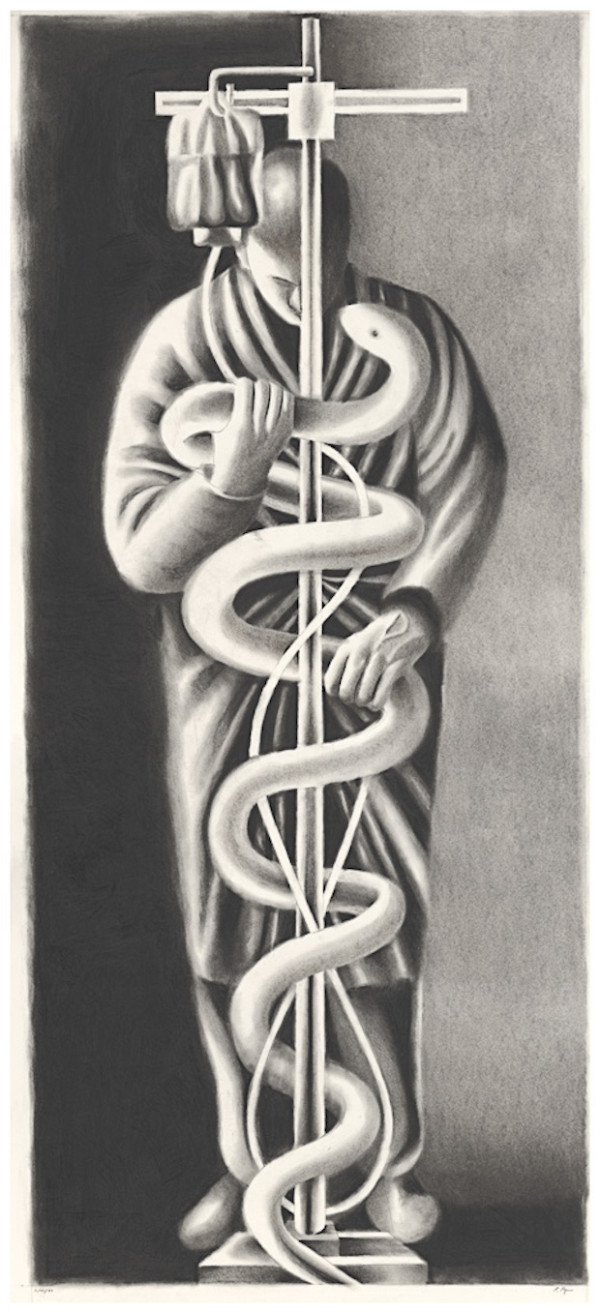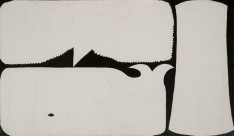A patient grapples with symbols of illness and healing, two forces that coexist in an endless contest. This struggle is physical, emotional and spiritual. In this life-sized drawing, Robert abandons realism for a more mythic approach. The snake, coiled around an I-V pole, serves as a fanciful visual pun on the caduceus, the Greek symbol of medicine, often shown entwined round the staff of life. The snake appears as both monstrous and divine, imbued with supernatural powers. The coils and turns of the snake’s body mirror the fall of the feeder tube from the bag of IV solution. The turning shapes fuse together man, animal and technology into one coil spring of energy. The twists also suggest the path of illness, as well as the path of healing, is labyrinthine, confusing and not easy to comprehend.
The image is titled “Aesculapius.” This is the name of literature’s first doctor, mentioned by Ovid in his book Metamorphosis. But where is the doctor in the image? Must the patient serve as his own doctor?
Robert invariably includes two ideas in one image. Here there are two references: the twisting snake as symbol of medicine, and a snake as an antagonist that a man wrestles with for his life. This latter allusion is to Laocoon, a messenger figure from the story of the Trojan Horse. The messenger is killed before delivering an unpopular but truthful message. The artist is a Laocoon, as are all cancer patients, with cancer serving as a kind of Trojan Horse, a hidden and deadly danger.


